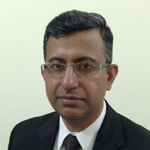
Fixing problems after trabeculectomy and non-penetrating surgery
This dealt with the common post-operative complications encountered by glaucoma surgeons.
Dr Alan Robin addressed the issues of flat and cystic blebs. He provided some background on the histological characteristics of blebs and how that impact bleb managements. He outlined the management of flat blebs, dyesthetic blebs, bleb induced dellen, overhanging blebs, encapsulated blebs, leaking blebs and large overfiltering blebs.
View Video
Peter Shah gave practical tips on how to tackle the overfiltering bleb. He emphasised the importance of both distance and near visual acuity changes on decision making for intervention in overfiltering blebs. He also highlighted the need to identify the site of least resistance to plan intervention. He elegantly categorised overfilteration based on duration from surgery and degree of overfilteration and outlined management options according to this.
View Video
Beth Edmunds explained that Bleb dysesthesia causes more than just patient discomfort since the pain is associated with discomfort and higher risk of failure in the long term. They can often be associated with dissociation between symptoms and clinical signs. Treating any existing ocular surface disorder both pre and post operatively is essential in managing these eyes. She described specific treatment options based on the etiologic factor causing the problem.
View Video
Eyetan Blumenthal divided the management of leaky blebs into early and late and discussed various management options. Early leaks he specified were more likely to be technique related while late leaks were dependent on a healing response. He emphasised that bleb leaks are often missed and careful evaluation of any eye with lower IOP may be required to detect an intermittent leak.
View Video
Colin Clement spoke on managing intra and post-operative complications of non-penetrating filtering surgery. He divided the management of TM perforations into micro and macro and explained treatment options for each setting. He deals with the management of low and high IOP post-surgery based on recognising the cause.
View Video
Fixing problems with tubes
Albert Khouri described how to avoid and manage low IOP post tube surgery. He mentioned that this can occur with all devices but is commoner with non valved devices. He divided their management into early and late presentation and gave insights on how to minimise therisk of hypotony.
View Video
Paul Healey spoke of the potential sites of blockage of a tube and causes of blockage from inlet to outlet and the various tissues that could block flow. Management options for early and late blockage were discussed.
View Video
Daniel Grigera dealt with tube exposure and reviewed the literature regarding risk factors for the exposure. He gave different management options depending in the degree and location of the exposure and whether there was co-existent infections. He described various surgical options including transposition of the conjunctiva and repositioning of the tube based on etiology.
View Video
Ching Lin Ho described the management of encysted blebs. She differentiated encapsulated blebs from Tenons cysts and spoke of the different rates on encystment with different tube designs. She also discussed strategies to minimise encystment such as the role of aqueous suppressants and mitomycin application as well as management options post operatively
View Video
Cecilia Fenerty elaborated on the reasons why the intraocular portion of the tube could be too short or too long including surgical technique. She highlighted the importance of good surgical technique and the need to fix the tube adequately to the scleral bed. She described very useful techniques for tube extension using a 22 G IV canula and lacrimal tubing.
View Video
Glaucoma progression
Pradeep Ramulu described the utility of trend and event based analyses on perimetry. He stressed that even changes of 5dB can impact activities of daily living. He highlighted that progression is often episodic and not linear and discussed advantages and disadvantages of both strategies while keeping in mind test related factors.
View Video
Carlo Gustavo de Moraes spoke of the role of frequency doubling perimetry, short wave automated perimetry and electrophysiological tests in detecting glaucoma and progression. FDP appears to detect more progression in many studies however defintions of progression are not consistent. He also mentioned that though tests measure threshold sensitivity we live a in a suprathreshold environment.
View Video
Linda Zangwill gave insights on detecting progression by the OCT. She mentioned how recent advances in OCT technology have enabled OCT angiography, measurement of the Bruchs membrane opening and Ganglion cell complex have provided much more clinical information challenges still exist in terms of little information regarding age-related change. However deciding what rate of change is clinically meaningful on the OCT can be challenging. She emphasized that using automated progression analysis is central to judging progression.
View Video
Ramanjit Sihota presented a case based approach to understanding measurement of progression using the HRT. She described the use of both event and trend based analysis and the limitations of trend analysis. She outline criteria to judge progression and methods to improve specificity.
View Video
Felipe Mediros spoke on how clinical implications of the structure function relationship and clinical disease severity. He mentioned that in general OCT detected change in early disease and perimetry in later disease. He described the combined structure function index that can be used merge information from both sources.
View Video
Identifying fast progressors on perimetry early is a concern to most glaucoma specialists and Ted Garway Heath spoke of the importance of factoring life expectancy while assessing this. Almost 10% of patients progress to visual field loss of less than 15 dB. He emphasised the need for adequate numbers of visual fields in order to detect clinically significant field loss of 2dB per year.
View Video

